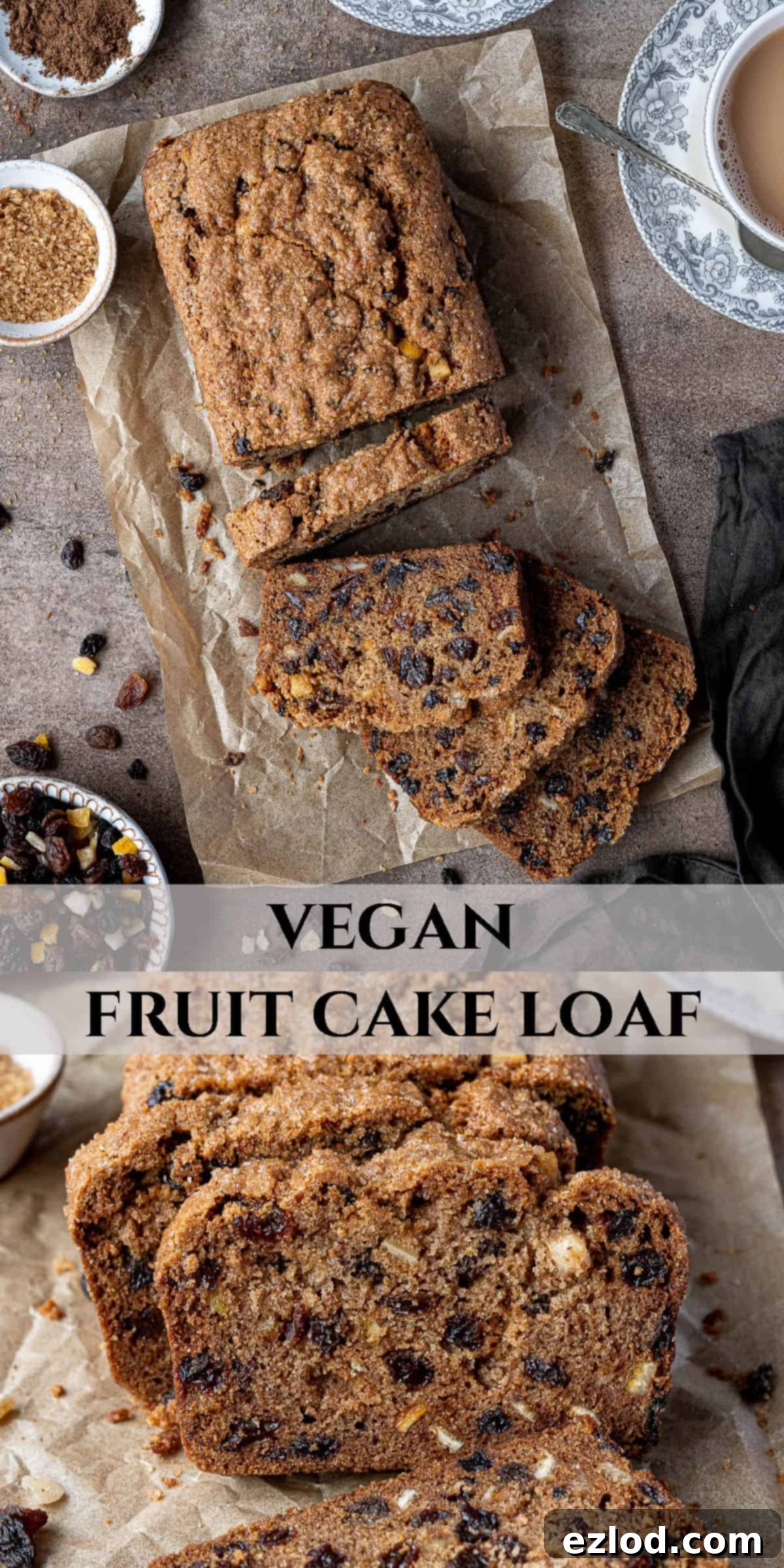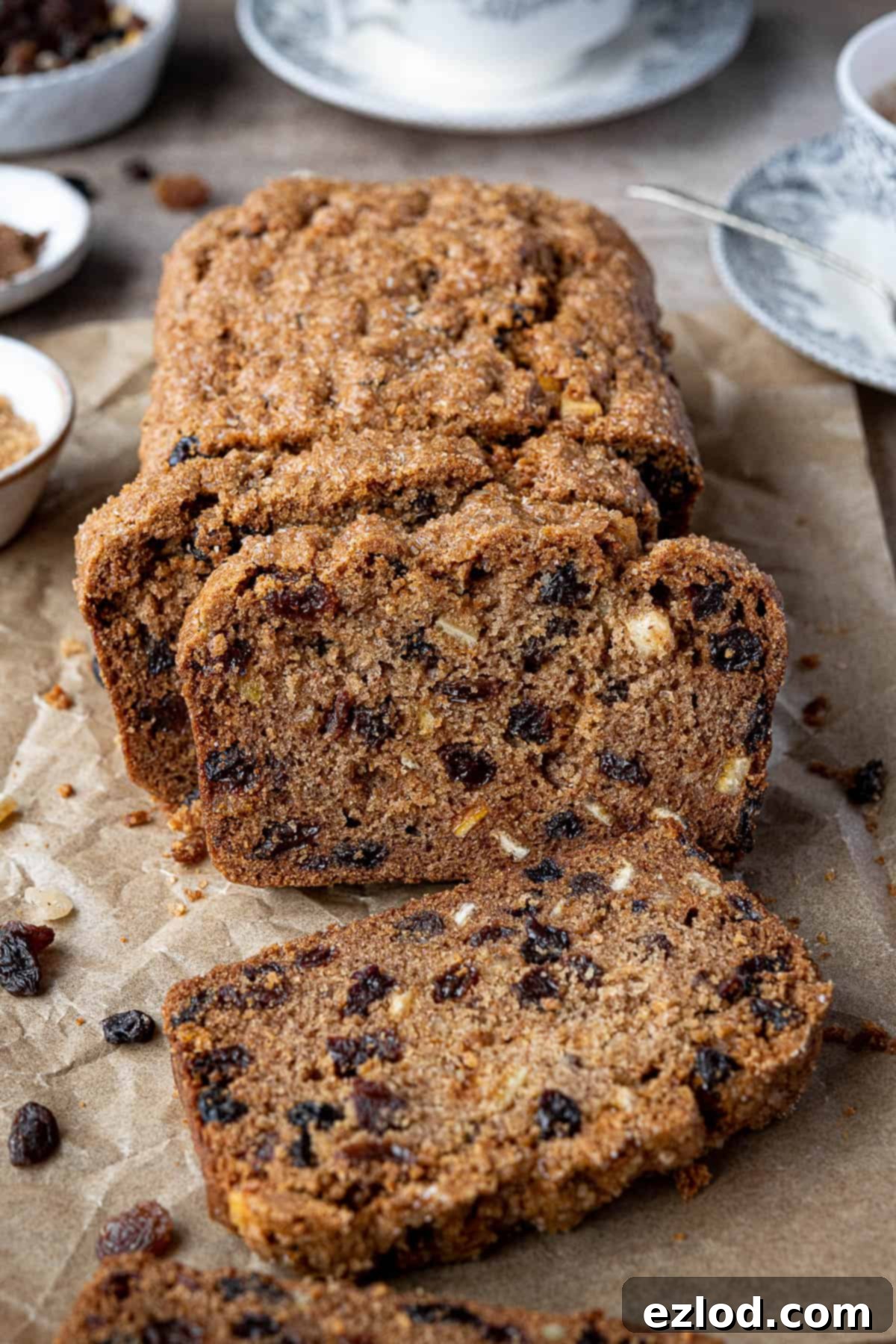Delicious & Easy Vegan Fruit Cake Loaf: Your Go-To Eggless & Dairy-Free Recipe for Everyday Indulgence
There’s something wonderfully comforting about a classic fruit cake, yet it often carries a reputation for being overly rich, dense, or strictly for festive occasions. We understand that fruit cake can be a bit of a polarizing topic, with many considering themselves “fruit cake haters.” However, allow us to introduce you to a delightful exception: this easy, everyday vegan fruit cake loaf. It’s a simple, homely, and utterly satisfying old-fashioned bake that perfectly embodies the joy of a homemade treat. Completely eggless and dairy-free, this recipe delivers a light, moist, and flavorful loaf that’s ideal for snacking alongside your favorite cup of tea, anytime you desire a little bit of sweetness.

Unlike its heavier, more elaborate cousin, the traditional Christmas cake, this vegan fruit cake loaf offers a much lighter, more approachable experience. It’s not about being fancy or overtly decorative; it’s about pure, unadulterated flavor and a heartwarming texture that keeps you coming back for more. This is the kind of cake that British baking icon Mary Berry would affectionately call a “cut-and-come-again” cake – meaning it’s so irresistible, you’ll find yourself reaching for “just one more slither” time and time again. Its rustic charm and simple appearance belie a deeply satisfying taste that makes it a true staple for any tea break or casual gathering.
Beyond its deliciousness, one of the greatest appeals of this eggless and dairy-free fruit cake is its incredible ease of preparation. You don’t need any special equipment or advanced baking skills to achieve a perfect loaf. The ingredient list is wonderfully basic, consisting of common pantry staples that are readily available. This makes it an excellent choice for beginner bakers or anyone looking for a foolproof recipe that consistently delivers fantastic results. Spend less time worrying about complicated steps and more time enjoying the process of creating a wholesome, homemade vegan treat.
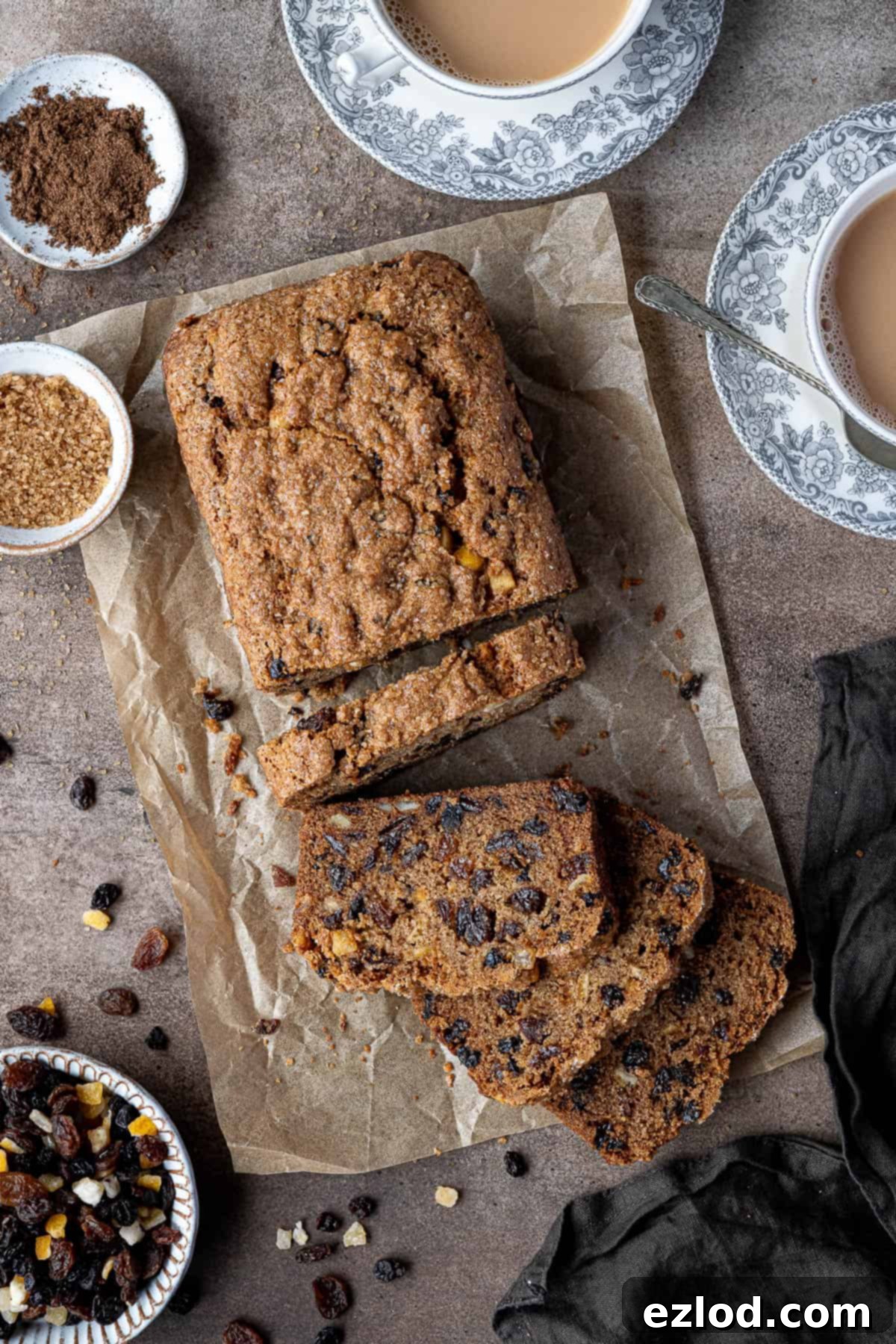
Essential Ingredients for Your Vegan Fruit Cake Loaf
Creating this delightful vegan fruit cake loaf relies on a handful of straightforward ingredients. Here’s a closer look at what you’ll need and why each component is important:
- Mixed Dried Fruit: This is the heart of your fruit cake. We recommend using a good quality shop-bought mix containing a balanced assortment of raisins, sultanas, currants, and candied peel for a traditional flavor profile. However, feel free to customize based on your preference! Chopped dried cranberries can add a lovely tartness, while apricots contribute a soft chew, and figs or dates offer deeper, caramel-like notes. The key is to maintain the overall weight of the fruit specified in the recipe to ensure the correct texture and moisture balance.
- Vegan Block Butter: The type of vegan butter you choose is crucial for the success of this recipe. It’s imperative to use a solid block butter or margarine, similar in consistency to traditional dairy butter, rather than the softer, spreadable kind that comes in a tub. Block butter provides the necessary fat structure for rubbing into the flour, creating a tender crumb. Brands like Naturli Vegan Block or Flora Plant Butter are excellent choices due to their firm texture and reliable performance in baking.
- Plain Flour (All-Purpose Flour): For this specific recipe, plain (all-purpose) wheat flour is highly recommended. Its protein structure is essential for holding the cake together and achieving the desired texture. While gluten-free baking has come a long way, this particular fruit cake recipe is not designed to be gluten-free and may crumble if substitutions are made. The unique method of rubbing in the butter works best with traditional wheat flour to develop a stable yet tender crumb.
- Unsweetened Non-Dairy Milk: Any unsweetened non-dairy milk will work, but soy milk is often considered the best option for baking due to its protein content and neutral flavor profile, which mimics dairy milk closely in recipes. Almond, oat, or rice milk can also be used, but ensure they are unsweetened to prevent altering the cake’s sweetness level. The milk contributes essential moisture and helps bind the batter together.
- Light Brown Soft Sugar: This type of sugar is not just for sweetness; it also adds a wonderful depth of flavor and moisture to the cake. The molasses in light brown sugar keeps the cake wonderfully soft and contributes to its homely, old-fashioned taste. Dark brown soft sugar can also be used for a more intense caramel note. We strongly advise against using white granulated sugar, liquid sweeteners, or artificial sweeteners, as they will significantly alter the texture, moisture, and overall flavor of the cake. For an extra touch of texture and a beautiful crunchy crust, we highly recommend sprinkling the top of the loaf with some Demerara (turbinado) sugar before baking. This optional step adds a delightful sparkle and a contrasting crunch to the soft cake.
- Baking Powder and Bicarbonate of Soda (Baking Soda): Both leavening agents are vital for achieving the perfect rise and tender texture in this fruit cake. They are not interchangeable. Baking powder is a complete leavener, containing both an acid and a base, activated by moisture and heat. Bicarbonate of soda, however, requires an additional acid (present in the brown sugar and potentially the vegan butter) to activate and produce carbon dioxide bubbles. Using both ensures a balanced rise and a light, airy crumb, preventing a dense or heavy cake.
- Mixed Spice and Ground Cinnamon: These warm, aromatic spices are characteristic of traditional British fruit cakes, infusing the loaf with a cozy, comforting flavor. Mixed spice typically includes cinnamon, nutmeg, ginger, and cloves, offering a complex and fragrant profile. You have the flexibility to adjust the amount of spices to your liking or even add other warming spices like a pinch of ground ginger or cardamom. If mixed spice is difficult to find in your region, pumpkin spice is an excellent substitute, as it shares a similar blend of autumnal flavors.
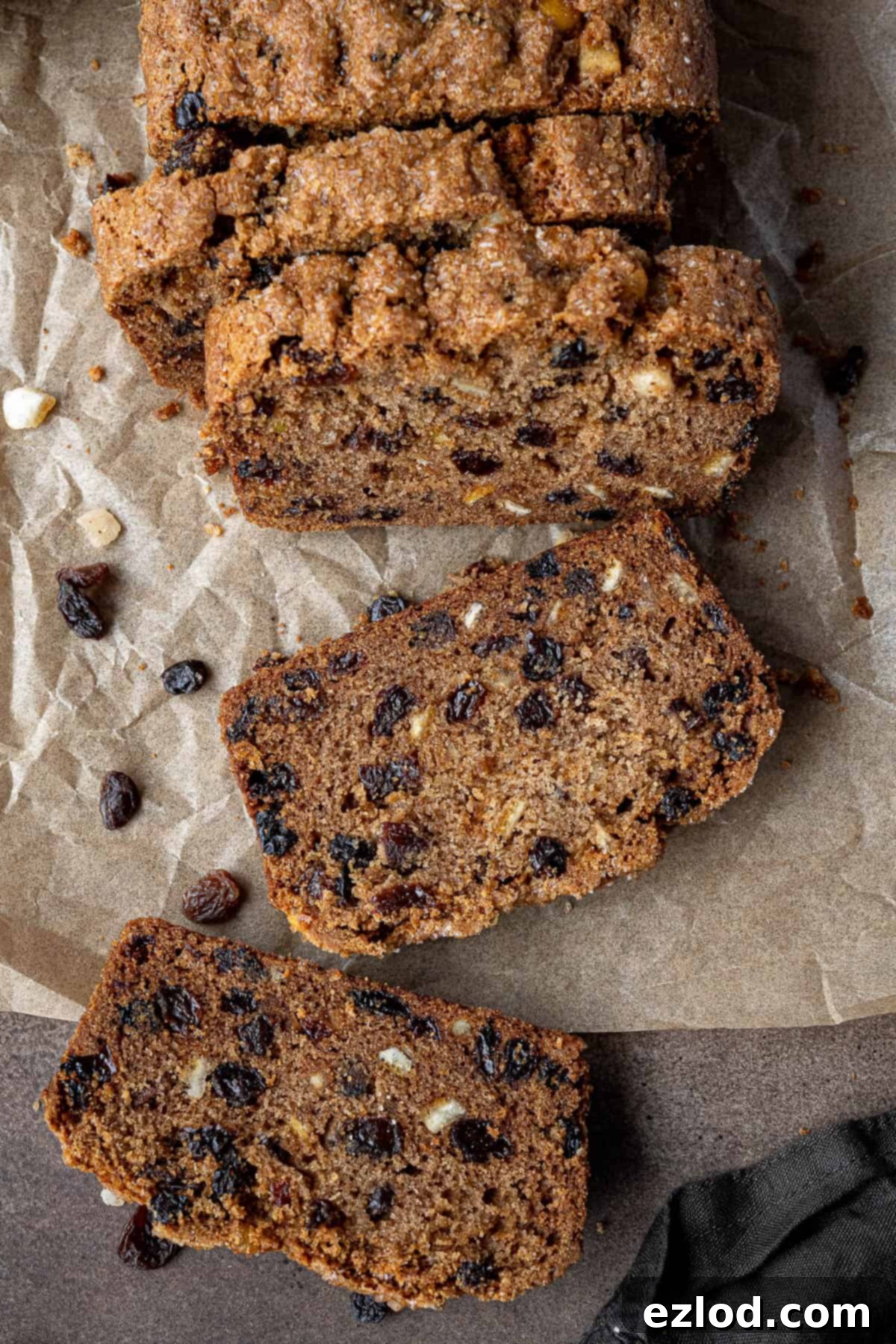
Step-by-Step Guide: Crafting Your Perfect Vegan Fruit Cake Loaf
(For precise measurements and detailed instructions, please refer to the comprehensive recipe card located at the bottom of this page.)
Making this vegan fruit cake loaf is incredibly straightforward, following a classic method that ensures a wonderfully moist and flavorful result. Here’s a breakdown of the simple steps:
First, begin by combining all of your dry ingredients – the plain flour, baking powder, bicarbonate of soda, mixed spice, and ground cinnamon – in a spacious mixing bowl. Whisk them together thoroughly to ensure all the leavening agents and spices are evenly distributed throughout the flour mixture. This crucial step prevents pockets of unmixed ingredients and guarantees an even rise and flavor in your finished cake.
Next, introduce the cold, diced vegan block butter into the dry ingredients. Using your fingertips, gently rub the butter into the flour mixture. The goal is to work quickly and lightly, incorporating the butter until the mixture resembles fine breadcrumbs. You shouldn’t see any large lumps of fat remaining. This rubbing-in method creates pockets of fat that release steam during baking, contributing to the cake’s tender and crumbly texture. Avoid overworking the mixture, as this can develop the gluten too much and result in a tough cake.
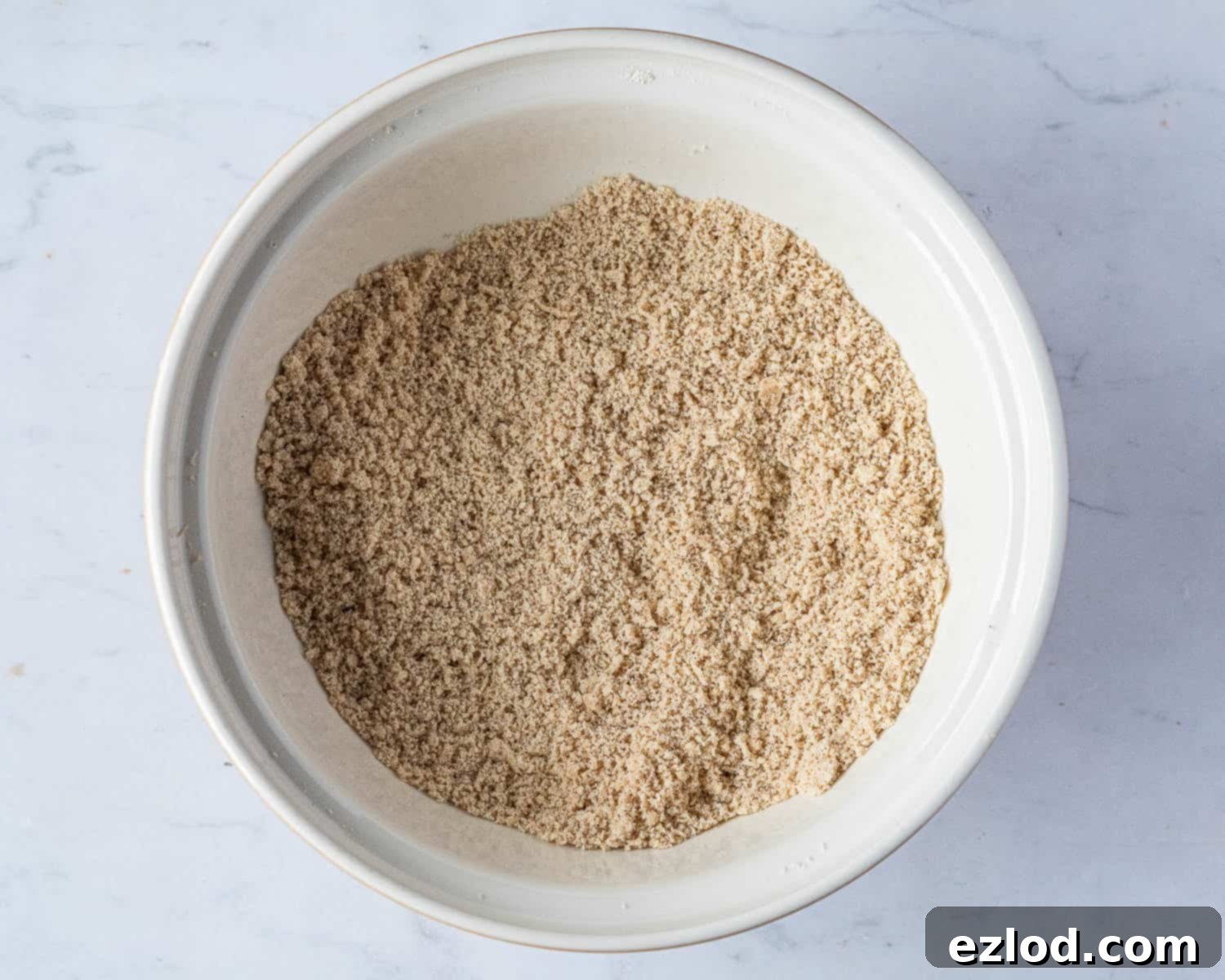
Once the butter is fully incorporated, stir in the light brown soft sugar and the mixed dried fruit. Give the mixture a good stir to ensure the sugar is evenly distributed and the dried fruit is well-coated, preventing it from sinking to the bottom of the tin during baking.
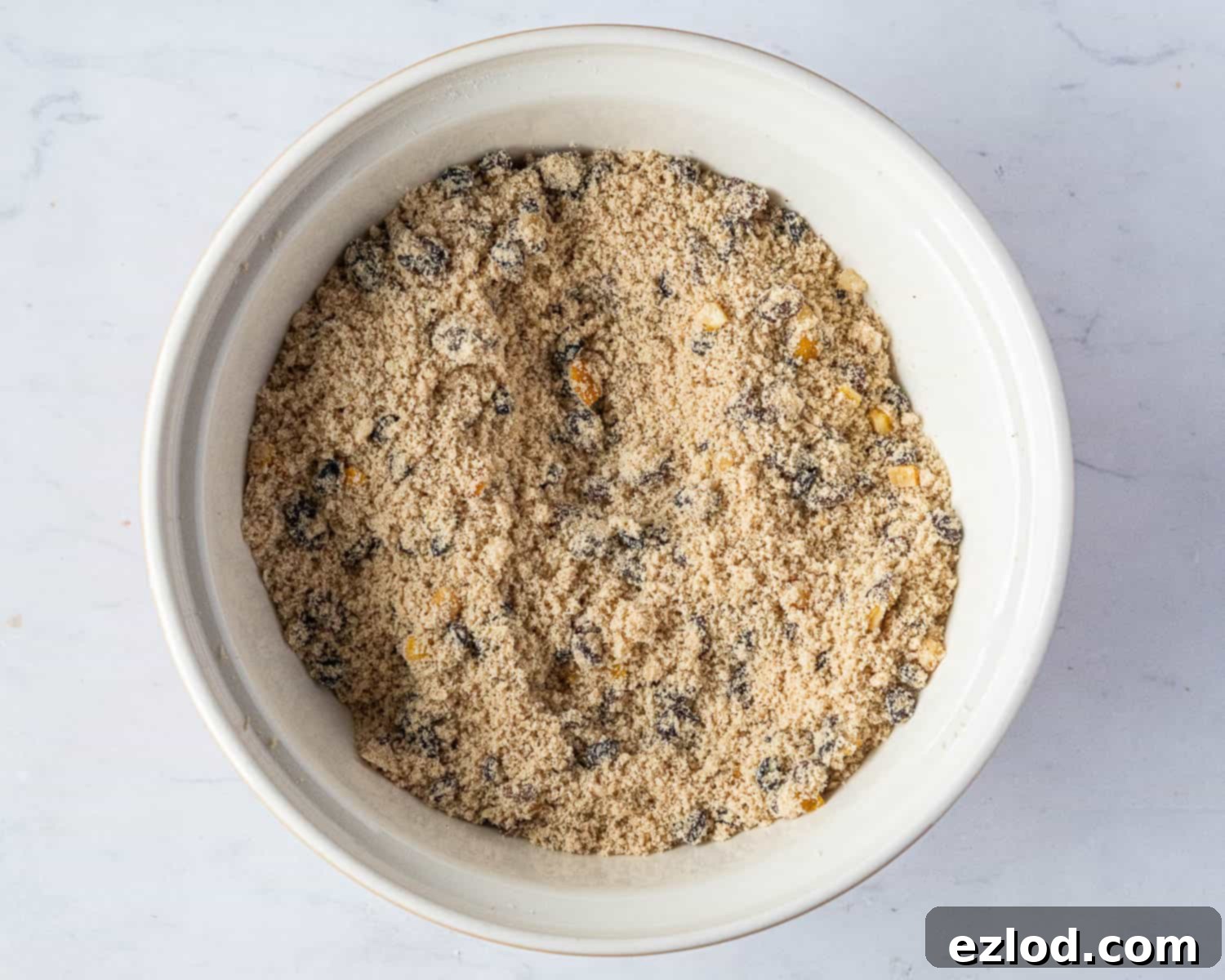
Now, pour in the unsweetened non-dairy milk. Mix everything together until a cohesive batter forms. Don’t be alarmed if the mixture initially looks a little bit ‘split’ or curdled; this is perfectly normal and will resolve as it bakes. The key is to mix just enough until all the ingredients are combined, avoiding overmixing, which can lead to a tough cake.
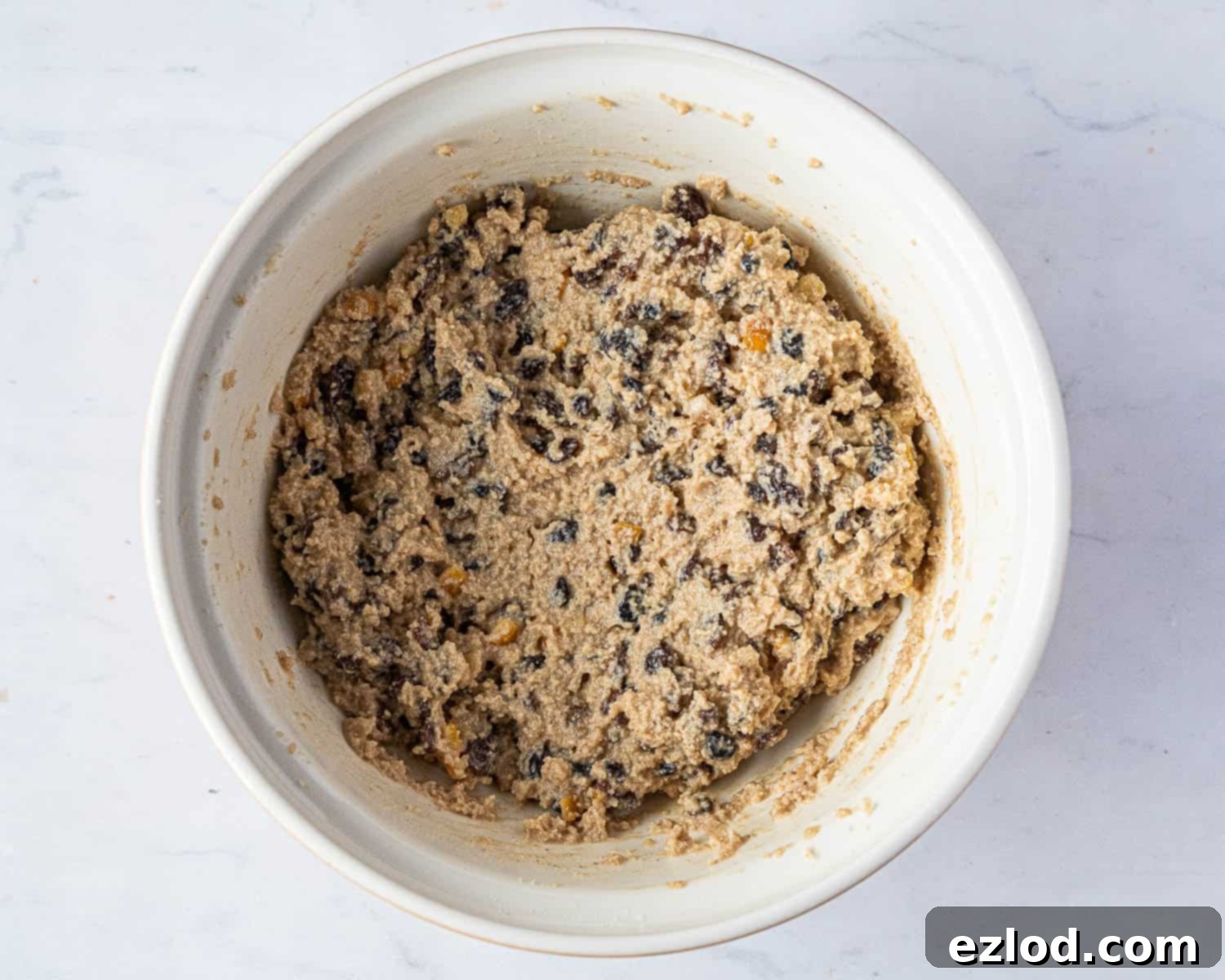
Carefully scrape the prepared batter into your greased and parchment-lined loaf tin. Use a spatula to spread the batter evenly, ensuring it’s level on top. For that lovely crunchy crust, sprinkle a generous handful of Demerara (turbinado) sugar over the surface of the batter.
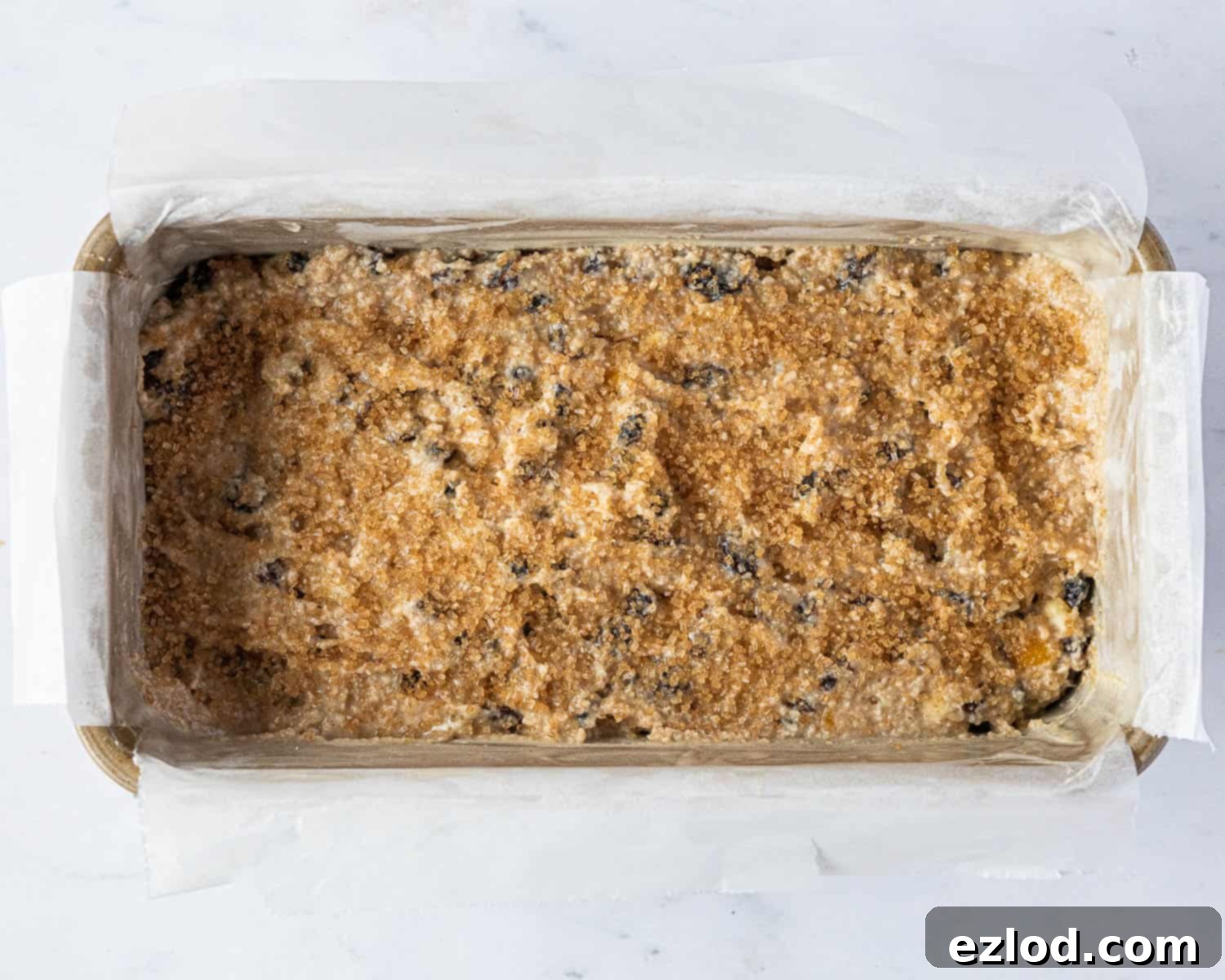
Bake the loaf in your preheated oven for approximately 60-70 minutes. The cake is ready when it’s golden brown on top, feels firm and springy to the touch, and a skewer inserted into the very center comes out clean or with only a few moist crumbs attached – never with wet batter. Be vigilant and avoid the temptation to over-bake, as this can lead to a dry cake. Every oven varies, so keep an eye on your cake as it nears the end of the baking time.
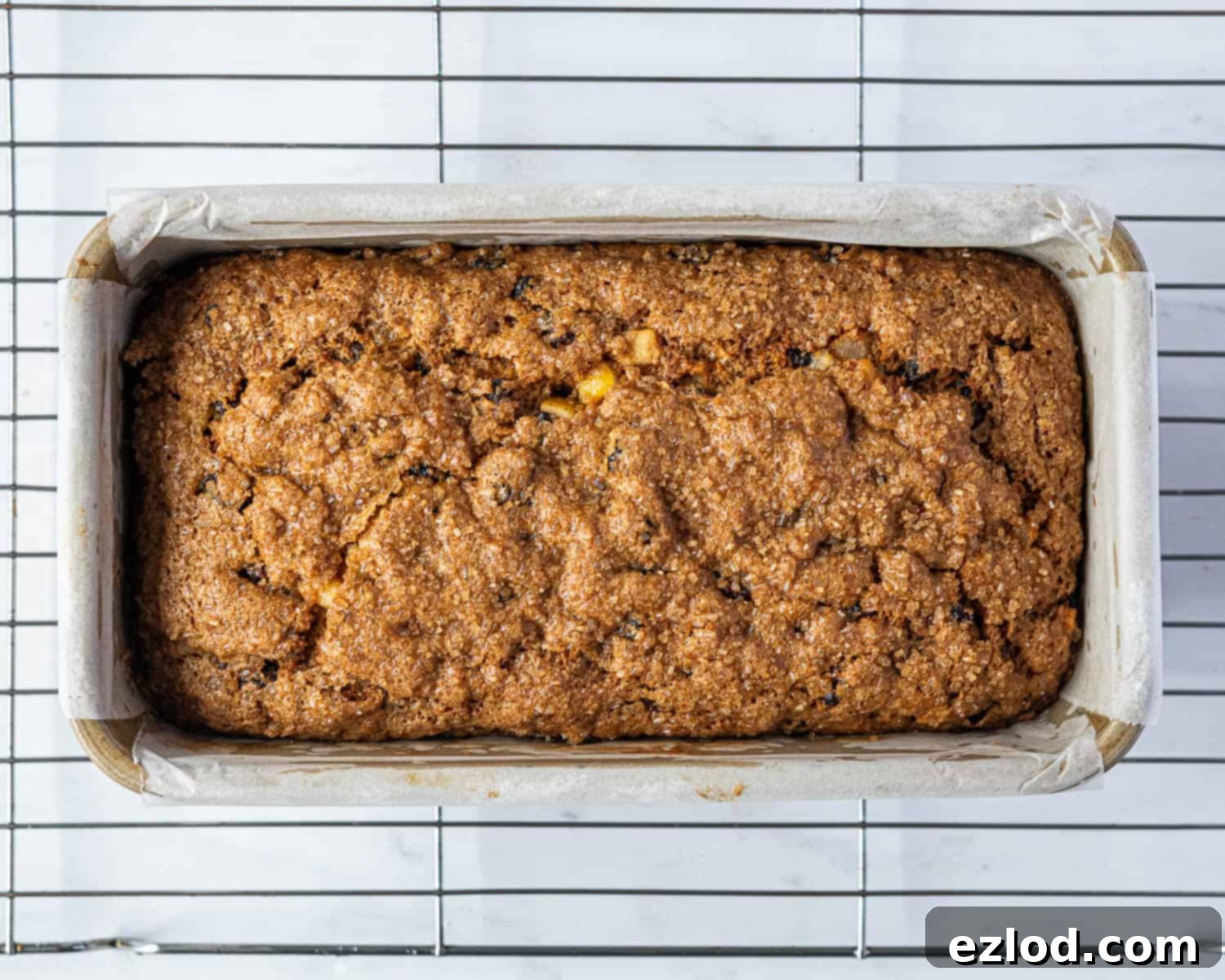
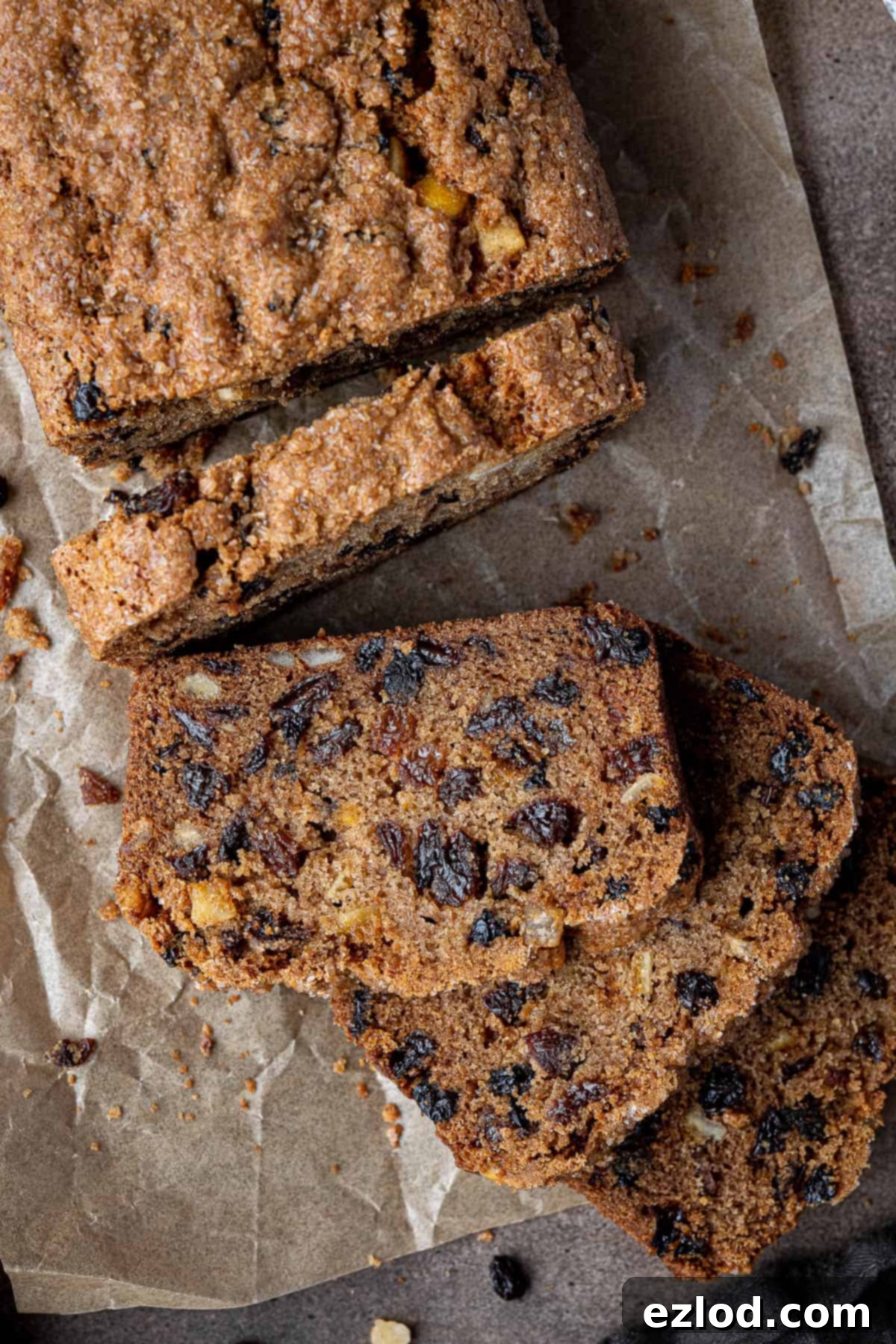
Expert Tips for the Best Vegan Fruit Cake Loaf
Achieving a perfectly moist and flavorful vegan fruit cake loaf is simple with these expert tips:
- Precision in Measurements: When it comes to baking, accuracy is paramount. We wholeheartedly recommend using metric measurements with a digital kitchen scale rather than relying on cup conversions. Cups are notoriously inaccurate, leading to inconsistent results. A digital scale ensures precise quantities, resulting in a far better and more consistent cake every time, not to mention less mess!
- Checking for Doneness: Beyond the skewer test, look for visual cues. Your fruit cake should be beautifully golden brown on top and feel firm but springy when gently pressed in the center. If it feels too soft or wobbly, it likely needs a few more minutes.
- Avoid Over-Baking: This is crucial! Over-baking is the quickest way to end up with a dry, crumbly cake. If, however, you do find your cake has dried out slightly, it can often be rescued. Drizzle a few tablespoons of simple syrup (equal parts sugar and water, heated until sugar dissolves) or a liqueur of your choice, such as brandy or rum, over the warm cake. This will help reintroduce moisture and enhance the flavor.
- Achieving Clean Slices: For neat, attractive slices that don’t crumble, allow the cake to cool completely before cutting. Use a very sharp serrated knife and employ a gentle sawing motion rather than pressing straight down. This technique helps to cleanly cut through the fruit and cake without squashing or tearing.
- Optimal Storage: Once fully cooled, your vegan fruit cake loaf will keep beautifully for about a week in an airtight container at room temperature. For longer storage, you can freeze individual slices or the whole loaf, well-wrapped in cling film and then foil, for up to 2-3 months. Thaw at room temperature before serving. While this cake is lovely and moist, it doesn’t have the extended shelf life of a very rich Christmas cake and will gradually dry out over time, so enjoy it promptly!
- Freshness of Leavening Agents: Ensure your baking powder and bicarbonate of soda are fresh. Expired leavening agents can lead to a flat, dense cake. Test them by adding a small amount to hot water (baking powder should fizz vigorously, baking soda should fizz when combined with a touch of vinegar).
- Room Temperature for Flavor: While the butter is used cold, serving the cake at room temperature allows its flavors and aromas to fully develop.
Should You Soak the Dried Fruit for Your Loaf Cake?
In many traditional fruit cake recipes, soaking the dried fruit in advance is a common practice, usually done for hours or even days in tea, fruit juice, or alcohol. However, for this specific vegan fruit cake loaf recipe, we don’t find it strictly necessary. The way this cake bakes, the fruit naturally absorbs steam from the batter during the cooking process, ensuring it remains wonderfully moist and plump without pre-soaking.
There’s also a potential risk associated with soaking the fruit for this particular recipe: if the fruit absorbs too much additional liquid, it can introduce excess moisture into the batter, which might lead to a cake that is too wet or prone to sinking in the middle during baking. The balance of ingredients in this recipe is carefully designed to provide perfect moisture without extra steps.
If you absolutely prefer to soak your fruit for an added layer of flavor or moisture, we recommend doing so cautiously. Use a minimal amount of liquid – about 3 tablespoons of alcohol (such as brandy, rum, or sherry) or orange juice. Ensure that the fruit fully absorbs all the liquid before you add it to the cake batter. This means letting it soak for at least a day, or even longer, until no excess liquid remains. This way, you get the flavor benefits without disrupting the cake’s structural integrity.
More Delicious Vegan Fruit Cake Recipes to Explore:
- Vegan Dundee Cake
- Classic Vegan Christmas Cake
- Wholesome Vegan Malt Loaf
- Gluten-Free Vegan Christmas Cake
- Traditional Vegan Simnel Cake
- Aromatic Vegan Earl Grey Tea Loaf
- Festive Vegan Mincemeat Cake
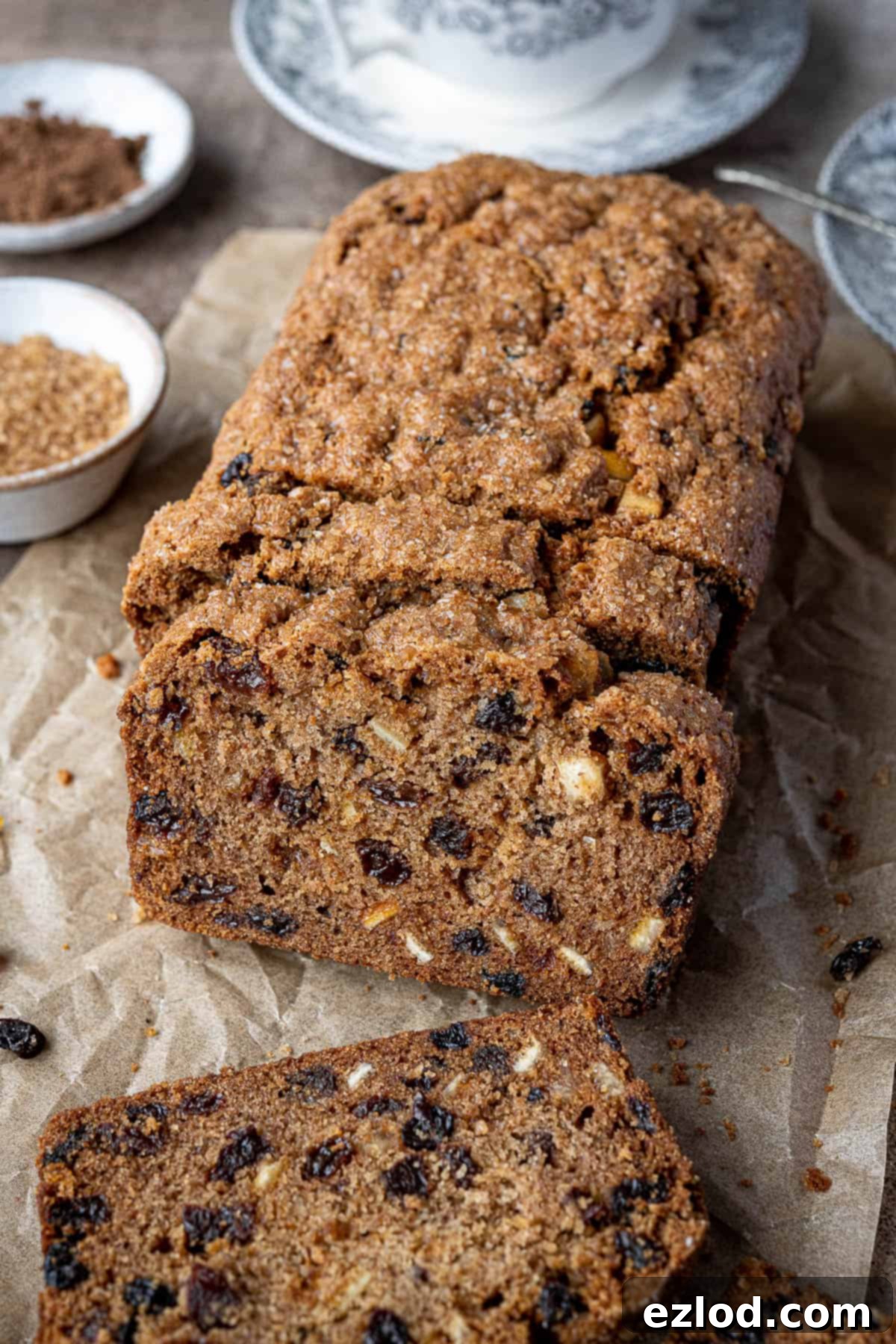
We hope you enjoy this easy vegan fruit cake loaf as much as we do! If you’ve tried this recipe, we’d love to hear about your experience. Please take a moment to rate it, leave a comment below, or tag @domestic_gothess on Instagram and use the hashtag #domesticgothess. Your feedback helps us grow and inspires other home bakers!
All images and content found on Domestic Gothess are protected by copyright. If you wish to share this delightful recipe, please do so by utilizing the provided share buttons. We kindly request that you do not screenshot or post the recipe or its content in its entirety. Instead, please include a direct link back to this original post for the full recipe and details. Thank you for respecting our work!
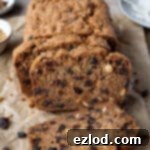
Print
Fruit Cake Loaf (Vegan)
Ingredients
- 225 g (1 ¾ cups + 1 Tablespoon) plain (all-purpose) flour
- 1 teaspoon baking powder
- ¾ teaspoon bicarbonate of soda (baking soda)
- 1 teaspoon mixed spice (or pumpkin spice)
- ½ teaspoon ground cinnamon
- 115 g (½ cup) vegan block butter cold and diced
- 115 g (½ cup + 1 Tablespoon) light brown soft sugar
- 300 g (10 ½ oz) mixed dried fruit
- 160 ml (⅔ cup) unsweetened non-dairy milk (I use soy)
- demarera (turbinado) sugar for sprinkling
Instructions
-
Preheat your oven to 170°C/150°C fan/325°F/gas mark 3. Prepare a 2 lb loaf tin by greasing it thoroughly and lining it with baking parchment, ensuring some overhang to help with removal.
-
In a large mixing bowl, combine the flour, baking powder, bicarbonate of soda, mixed spice, and cinnamon. Whisk well to ensure they are evenly distributed.
-
Add the cold, diced vegan block butter to the dry ingredients. Using your fingertips, rub the butter into the flour until the mixture resembles fine breadcrumbs and no large lumps of fat remain.
-
Stir in the light brown soft sugar and the mixed dried fruit until thoroughly combined.
-
Pour in the unsweetened non-dairy milk and mix gently until a cohesive batter forms. The mixture might appear slightly split, but this is perfectly normal and will bake out. Avoid overmixing.
-
Scrape the batter into your prepared loaf tin and spread it level using a spatula. For a delicious crunchy crust, generously sprinkle the top with Demerara sugar.
-
Bake for 60-70 minutes, or until the cake is golden brown, firm to the touch, and a skewer inserted into the center comes out clean (or with a few moist crumbs, but no wet batter). Be careful not to over-bake, as this can make the cake dry.
-
Allow the cake to cool in the tin for at least 15-20 minutes before carefully transferring it to a wire rack to cool completely. Once fully cold, store it in an airtight container at room temperature to maintain its freshness.
Notes
- For additional helpful tips, detailed insights into ingredients, and step-by-step photos, please refer to the comprehensive guide above this recipe card.
- As with all our baking recipes, we highly recommend using metric measurements with a digital scale rather than cup conversions. Using a scale provides far more accurate and consistent results, making your baking experience easier and ensuring a perfect outcome every time!
